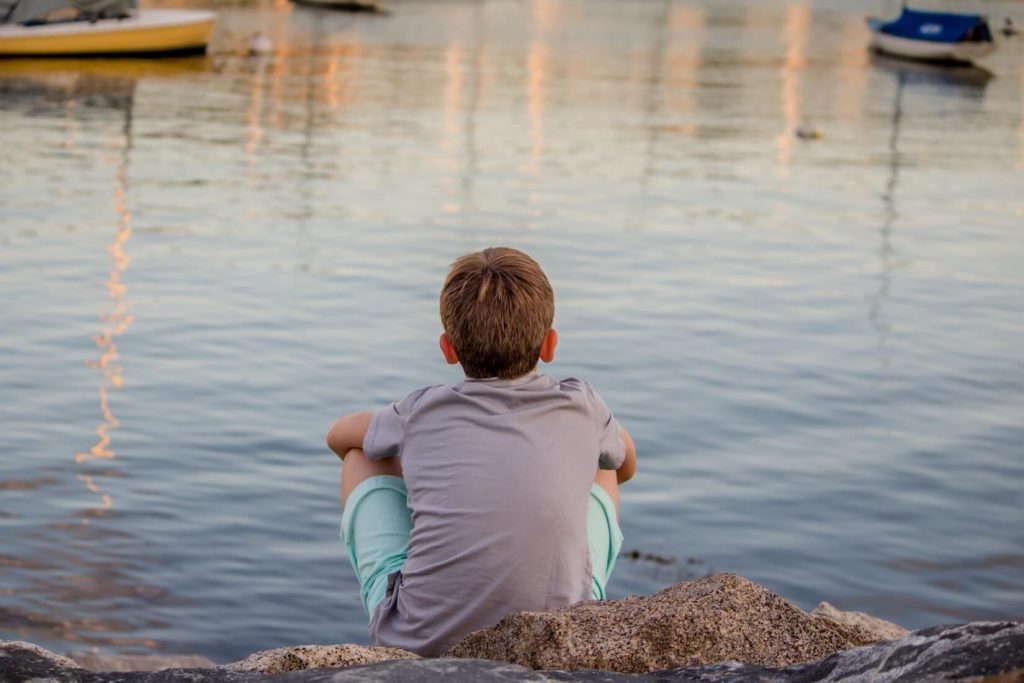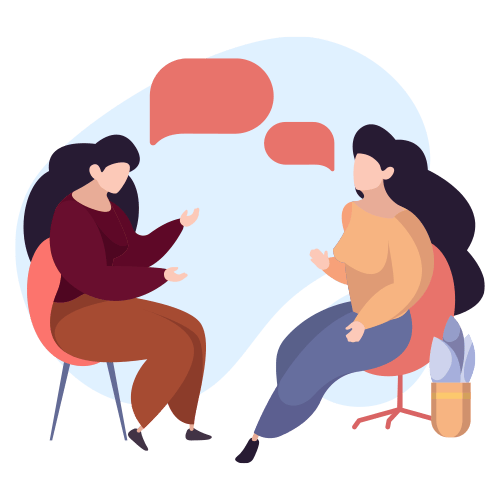Anxiety in Children

Anxiety is a normal and natural human emotion that typically arises from feelings of fear, nervousness, or uncertainty about future events or situations. It is a common response when feeling stress, worry, or a lack of control. However, it is important to understand that experiencing anxiety is normal and can even be helpful in some situations.
Anxiety Is Different in Children
Every human being has had the experience of feeling anxiety, including children. In fact, anxiety is one of the most common mental health concerns for children. Anxiety in children is similar to anxiety in adults but may manifest differently.
For example, some children may not always express their anxiety verbally or have the ability to express emotions clearly. Instead, they might display physical symptoms ( e.g., headaches, stomachaches) or behavioral changes ( e.g., avoidance, clinginess, defiance, abnormal behaviors).
Some common types of anxiety that are seen in children include:
- Social Anxiety: An intense fear or apprehension of being judged, negatively evaluated, or rejected in a social or performance situation.
- Separation Anxiety: Distress resulting from being separated from primary attachment figures, often exceeding what’s typical for one’s developmental level.
- Phobias: Intense, irrational fears of specific objects, situations, or places, which often lead to avoidance behavior.
- General Anxiety: Chronic and excessive worry about various everyday problems, often accompanied by physical symptoms like restlessness and fatigue.
According to the National Institute of Health, 31.9% of children are affected by an anxiety disorder. Anxiety can be caused by a variety of factors such as genetics, brain chemistry, personality, life experiences, trauma, and environment.
Treating Anxiety
Anxiety can be impactful on a child’s well-being and functioning. If you know or have a child with anxiety, you are not alone! It might feel scary and overwhelming at times.
Below are some tips to support a child who might have anxiety:
- Create a calm environment: A consistent and predictable environment and routine can be helpful in reducing anxiety. Creating a calm environment for a child is not just about the physical environment, but also about the emotional one. Having a supportive environment where the child feels a sense of security and safety is important. Consider saying statements such as: “I am here for you”, “How can I help?”, or “Together, we can work on this.”
- Validation: Try to avoid dismissing fears and emotions, and acknowledge how the child is feeling in the moment. Assure the child that it is normal to feel anxious even if it might be uncomfortable at times. Reassurance that all feelings and emotions are okay might feel supportive and helpful for the child to calm down naturally.
- Avoid Avoidance: If anxiety is avoided 100% of the time, the anxiety will be reinforced and likely to increase in frequency. Encourage children to face anxiety-provoking situations and support them in doing so. Small exposures to things that might increase anxiety will help the child create a neutral or even positive association with it.
- Coping Skills: Coping skills can provide children with tools to manage their emotions and navigate challenging situations. Deep breathing, physical activity, distraction tools, and meditation are all examples of general coping skills that can be helpful.
- Seek Professional Help: Oftentimes, mental health professionals are able to get at the root cause of what is going on with anxiety and can be helpful in navigating a deeper exploration. In most cases, children will benefit from working with a person who is not a caretaker or closely related to the child.
Managing anxiety in children is a big task! Reach out to Mountain Vista Psychology for support in the process. Our highly trained psychologists and therapists are here to assist you in every step along the way!
Schedule a FREE Consultation
We believe in an integrative and holistic approach to help you make the changes you want. Contact us now to schedule an appointment or to request a 20 minute free phone consultation. During this session, you will be invited to share your story and ask any questions you may have.
Recent Articles
Identifying Different Parenting Styles
Much like everything in life, there are differences in the way people parent their children. People often want to know…
Signs Someone You Love May Be Hiding Depression
Depression can be scary for many people. Depression can make individuals feel as though they are losing control over their…
Fighting the Good Fight with Couples Therapy
Tension and conflict are normal and even healthy parts of any relationship. Sometimes, tension and conflict work out by itself.…
What Is Family Therapy?
In any family, it is normal to have a certain level of conflict. In fact, conflict might even be healthy…





